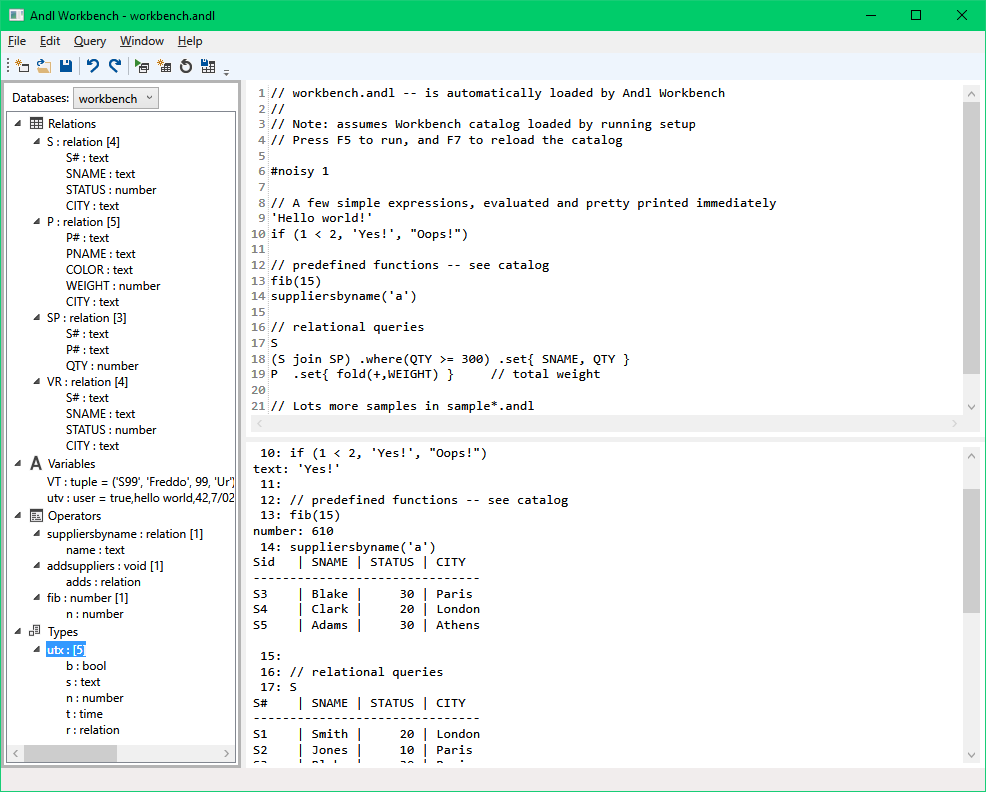Andl.NET is a pure implementation of the Relational Algebra for manipulating
relational data in any .NET language. While Andl itself is a full programming
language, Andl.NET relies on another language such as C# and simply provides
the higher order queries.
Andl.NET can perform relational queries at or beyond the capabilities
of any SQL dialect. It can do all the ordinary things like select, where
and join but it can also do generative queries, self-joins, complex
aggregations, subtotals and running totals (a bit like SQL recursive
common table expressions and windowing).
Andl.NET has its own in-memory database so it can provide a complete
application backend for any kind of user interface on any platform. It can
easily be used to program a data model as a set of tables just like SQL, but
including all the access routines, without the need for an Object Relational
Mapper.
Andl.NET can retrieve data from Csv, Txt, Sql, Odbc and Oledb but does not
provide any persistence mechanism. (Left as an exercise for the caller!)
The core feature of Andl.NET is an implementation of the generic interface
IRelatable<T>. This provides a series of extension methods similar in flavour
to Linq’s IEnumerable<T> and IQueryable<T>, but directly implementing the core
features of the Relational Algebra.
The main differences from SQL are:
* all joins are natural (by attribute name)
* relations (tables) have no duplicate tuples (rows)
* data values cannot be null.
The main differences from Linq are:
* provides sources, stores and updates as well as queries
* many additional relational operations
Sample programs are included to demonstrate these capabilities. Familiarity
with Linq will help in reading them.
A future release of Andl.NET will generate SQL so that queries can be
executed on a relational database backend.
The release is here.
The licence is Licence.

